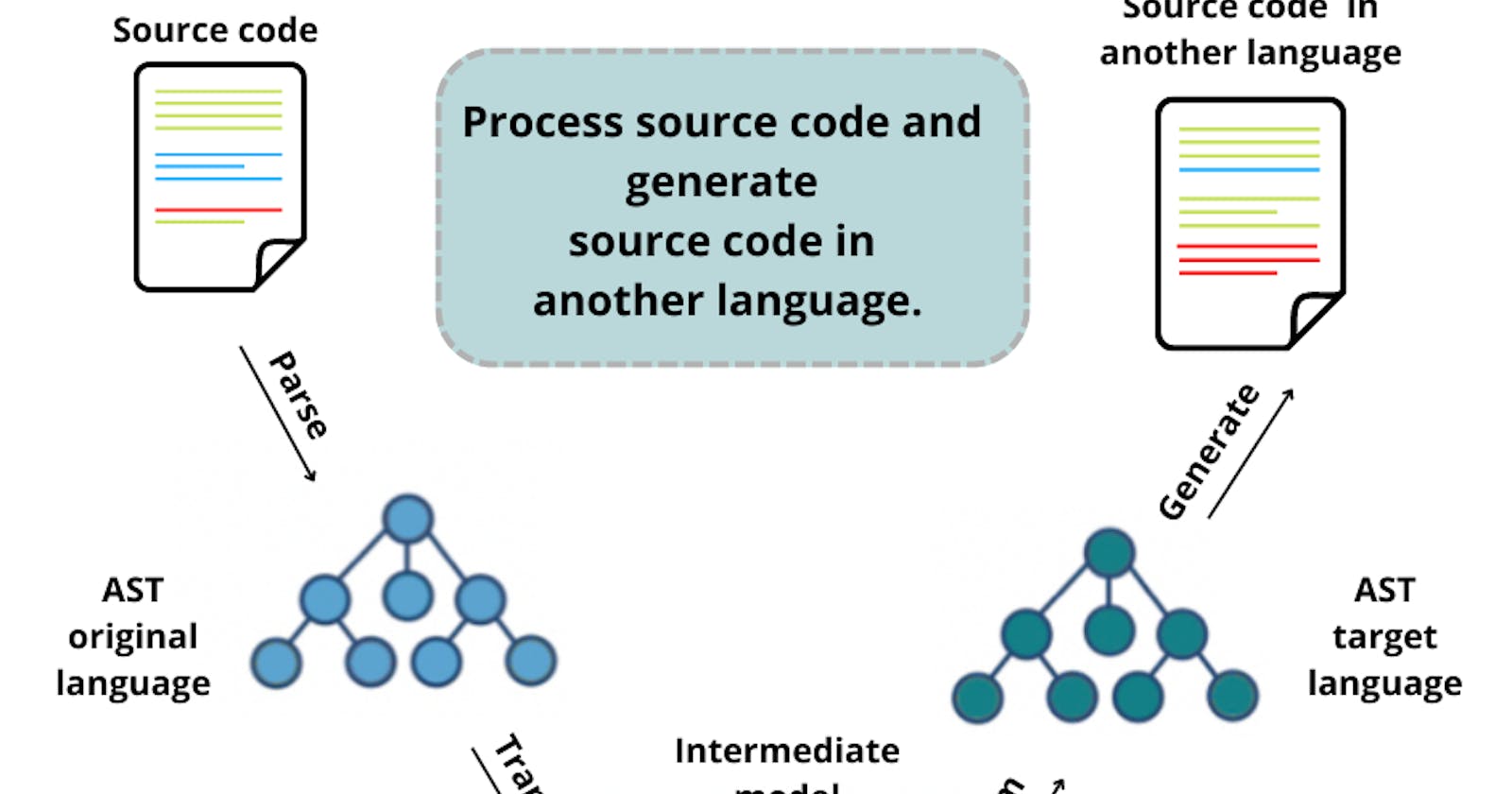Transpilers or WTH does Babel do
Bridging Programming Languages in the Digital Era
WHAT IS TRANSPILER?
A transpiler is a specialized tool that transforms source code from one programming language to another, facilitating interoperability and migration. Unlike traditional compilers that produce machine code, transpilers generate equivalent high-level code in a different language while preserving functionality. This process allows developers to work in familiar languages, adapt to new technologies, or optimize code for specific platforms. Transpilers play a crucial role in software development by easing the transition between languages with diverse syntax and features, enhancing code maintainability, and promoting cross-language compatibility.
Transpilers facilitate language conversion at the same abstraction level, like translating C++ to C or Python to Ruby. However, converting Java to bytecode or C to assembly isn't transpilation, as it involves changing abstraction levels. Transpilers retain code abstraction, allowing smooth transitions between languages with similar levels of complexity.
How is a transpiler different from a compiler?
A compiler serves the purpose of translating high-level, human-readable code into low-level instructions that a computer can execute. For example, a C compiler takes C code and produces machine-executable code. Similarly, a Java compiler converts Java code into Java bytecode, which is then interpreted at runtime for execution on the target machine.
On the other hand, a transpiler typically operates at the level of high-level languages, generating output that remains human-readable. However, this output cannot be directly executed unless its specific compiler or interpreter is invoked. For instance, a transpiler might convert Java code to C++ code, but to run the resulting machine code, the programmer needs to invoke a C++ compiler.
Despite these distinctions, some individuals use the terms "compiler" and "transpiler" interchangeably. Notably, VOC is referred to as a transpiler from Python source code to Java bytecode, although these languages are at different levels of abstraction. Nevertheless, it's acceptable to consider translations at the same level of abstraction as transpilation, such as converting .ASM assembly code to .A86 assembly code.
Why would I want to use a transpiler?
Few reasons for using a transpiler:
Migration: Transpilers are valuable for migrating legacy codebases to modern programming languages, allowing organizations to leverage the benefits of contemporary development environments.
Compatibility: Transpilers enable developers to generate code compatible with older language versions while still incorporating features from newer versions. This is particularly useful for ensuring compatibility with platforms that may not support the latest language standards.
Coding Skills: Transpilation allows codebases to be transformed into languages that align with readily available coding skills or personal preferences. For example, developers from an object-oriented programming (OOP) background might prefer TypeScript, while Python coders might opt for CoffeeScript, both of which can be transpiled to JavaScript.
Performance: Transpilers facilitate code optimization by allowing the conversion of code to a language better suited for performance on a particular platform. For instance, critical sections of a Python codebase could be transpiled to Fortran, taking advantage of a more efficient compiler.
- Tooling: Some source languages may lack robust tooling, but transpilation allows developers to work in a source language with superior Integrated Development Environments (IDEs), testing, and debugging tools. This is exemplified in the case of .NET developers using Visual Studio for enhanced tool support.
How does a transpiler work internally?
A transpiler undertakes the process of code analysis by parsing and extracting tokens, which constitute the fundamental elements of a programming language. These tokens encompass language keywords, variables, literals, and operators. This parsing involves a combination of lexical and syntax analysis, guided by the transpiler's comprehension of the syntax rules in the input language. Subsequently, the transpiler constructs an Abstract Syntax Tree (AST) based on this understanding.
The subsequent phase involves adapting the AST to align with the structure of the target language. This transformed AST serves as the foundation for generating code in the desired target language. An online tool like AST Explorer facilitates the visualization of the AST derived from a given code snippet across various popular programming languages.
Several transpilers exist for different programming languages, enabling code conversion between languages at the same abstraction level. Here are a few examples:
Babel: A widely used transpiler for JavaScript, Babel allows developers to write code using the latest ECMAScript features and then transpile it into an older version for broader browser compatibility.
TypeScript Compiler (tsc): TypeScript is a superset of JavaScript, and its compiler transpiles TypeScript code into standard JavaScript. This allows developers to use TypeScript's static typing and other features while targeting JavaScript environments.
CoffeeScript: CoffeeScript is a transpiler that converts its own concise syntax into JavaScript. It provides syntactic sugar and aims to make JavaScript code more readable and expressive.
Pyright: Pyright is a static type checker for Python that can also function as a transpiler by generating optimized TypeScript code from Python. This facilitates the use of Python in TypeScript projects.
JSX to JavaScript transpilers: JSX, a syntax extension for JavaScript often used with React, can be transpiled into regular JavaScript. Babel is commonly used for this purpose, allowing developers to write JSX code and convert it for execution in browsers.
Haxe: Haxe is a cross-platform toolkit and transpiler that allows developers to write code in Haxe and then transpile it into various target languages, such as JavaScript, Python, Java, and more.
These examples illustrate the diverse applications of transpilers, ranging from enhancing JavaScript development to enabling code migration and cross-language compatibility.

